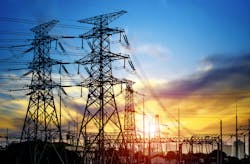Operating, Spinning Reserves Need to Be Optimized for Reliability
Way back in 2000, the U.S. National Renewable Energy Laboratory (NREL) published an important and little-noticed research paper: "Fundamental Drivers of the Cost and Price of Operating Reserves." In the report, the authors (a team of four world-class Colorado-based energy R&D laboratory professionals) made this statement: "Operating reserves impose a cost on the electric power system by forcing system operators to keep partially loaded spinning generators available to respond to system contingencies and random variation in demand. In many regions of the United States, thermal and hydropower plants provide a large fraction of the operating reserve requirement. Alternative sources of operating reserves, such as demand response and energy storage, may provide these services at lower cost. However, to estimate the potential value of these services, the cost of reserve services under various grid conditions must first be established.”
Operating reserves are vitally needed by electric utilities if they are to ensure that energy is available when needed in response to a number of system events that might drive additional need. Spinning reserves are generators that are typically already online and can quickly increase their output to meet changes in demand. Other operating reserves are generators that can be dispatched by the operator to meet demand, but that cannot respond as quickly as spinning reserves. Both are needed to maintain the reliability of the grid and therefore should be optimized.
While spinning reserves have the ability to respond rapidly to a sudden need for more power, this ability comes at a cost. Running a plant at levels different than its optimal operating point in order to provide spinning reserves can cause inefficiency in the provision of energy from individual resources, while also increase costs by requiring more plants to be online. The addition of wind and solar power can increase the need for balancing reserves to cover minute-to-minute and hour-to hour variability and uncertainty; at the same time these and other power electronic interfaced resources can respond very quickly if required to do so after an event.
Recent developments in new technologies such as storage, load management, advanced predictive capability, and the demonstration of new inverter capabilities have the potential to contribute to spinning and other reserve requirements. The changing energy landscape is driving the need to reconsider the industry’s traditional approach to reserves including the increased use of variable energy resources.
Operating reserves, including spinning, are required today based on NERC standards. All balancing area authorities in the United States require some minimum amount of spinning reserve capacity to be kept online at all times to respond to sudden losses of generation and/or unexpected changes in net load. These “spinning reserve” requirements have become imbedded within the grid codes of utilities, ISO’s and RTO’s across the world.
With traditional technologies, minimum online reserves were necessary to prevent generation-load imbalances from leading to unstable drops in frequency.
Generator protection is typically designed to trip generators offline if frequency approaches levels in which turbine blade resonance may damage equipment. The inertia on the system is being reduced, leading to a greater change in frequency after an event, but these resources can respond significantly quicker and more accurately than traditional resources to recover frequency.
At the same time, reserve requirements and definitions are changing across the world, with new types of services (e.g. fast frequency response) being defined. These services also interact with each other, e.g. an increase in the provision of quick response from inverter-based resources alters the need for slower acting reserves.
It is possible that significant economies may be realized by revising these reserve requirements. However, additional work may be needed in order to fully assess tradeoffs and potential benefits of different technologies.
Among the key questions which need to be addressed, there are these:
What are reserve requirements today and in what ways can we challenge the traditional thinking given industry transformation with respect to data and technology?
What is the optimal level of reserves?
-What variables must be considered in this determination?
-To what extent can new technologies and/or improved forecasts reduce the necessary level of reserves, and what are the benefits of doing so?
What are the reserve requirements of different interconnections across United States? How do these requirements compare to the optimal level described above?
If the reserve requirements are at other than an optimal level, what changes are appropriate to increase economic efficiency?
If changes are made to reserve requirements obligations across the United States, would these changes attract investment and increase economic efficiency?
-Are there other changes to market rules required to approach an economic optimum?
-Can the definitions of acceptable reserves be modified to allow alternative solutions at lower costs?
What is the cost (in dollars, emissions, efficiency penalty, and/or opportunity cost) of maintaining traditional spinning reserves?
Are these costs changing (on either an absolute or per-unit basis) as a result of the addition of generating resources with different capabilities (e.g. wind and solar, battery storage)?
About the Author
Gordon Feller
Europe Insights Editor
Gordon Feller has spent the past 40 years working to create a sustainable energy future. Among his many roles, he served as an Obama appointee on a select U.S. Federal Commission, established by the U.S. Congress to focus on recommending actions to address the future of utilities, the grid, EVs and storage.
